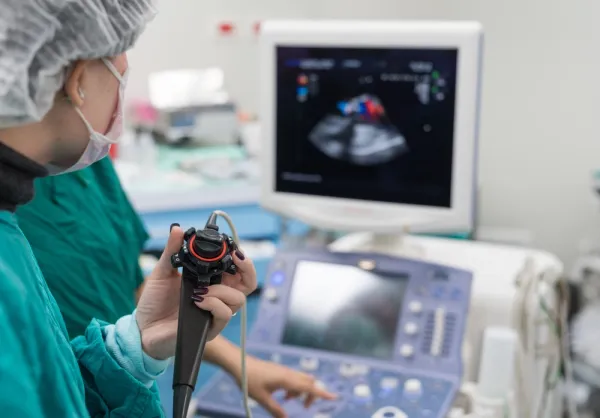Radiology Coding Alert
Can You Code this Tricky Cartilaginous Disease of the Knee Diagnosis?
Put on your thinking cap and work your way through this challenging example. If you code for the radiology specialty long enough, you’ve probably seen it all when it comes to diagnosis coding. Still, you might agree that it’s not typically the unusual diagnoses that prove the most difficult to convert into ICD-10 codes. Rather, the most troublesome diagnoses are often those that overwhelm you with specificity and abstract verbiage. In the case of coding cartilaginous diseases of the knee, coders often find themselves in these exact scenarios. While the actual diagnosis may not be that uncommon, the provider may not do you any favors with his choice of wording. Dive into this difficult scenario to test both your coding skills and anatomical range of knowledge. Utilize Full Dictation Report to See the Big Picture Indication: 65-year-old patient with right knee pain, osteoarthritis Impression: Patellar cartilage fissure with adjacent subchondral cystic change, primary osteoarthritis Before coming to any coding considerations, you want to make sure you’ve got a firm understanding of the entire first diagnosis at hand. Under the impression, there are two separate diagnoses to take into account: patellar cartilage fissure and adjacent subchondral cystic change. Unless you fully understand how these two diagnoses play off of each other, your initial instinct may be to code both of these diagnoses on their own. A patellar cartilage fissure is a defect within the articular cartilage of the knee. More specifically, you can think of a cartilaginous fissure as a tearing or cracking of the cartilage that lines the patella. Typically, cartilaginous fissures form one of two ways: via injury or degeneration. Still, it’s important to distinguish between “wearing down” of the cartilage from that of fissuring. Typical osteoarthritis involves a constant degradation of the articular cartilage but does not usually exhibit signs of fissuring or tearing. In fact, most instances of articular cartilage fissuring do involve some form of trauma. This is where the other diagnoses come into play. As you can see, there is no reference to trauma, but there is mention of osteoarthritis. However, unless the provider states otherwise, you should consider the fissuring and the osteoarthritis two separate entities for the sake of this example. Careful: If you’re not convinced of a cause and effect relationship (or lack thereof) between the two diagnoses, then you should check first with your provider. “If the radiologist confirms that the osteoarthritis and the fissure are not interrelated, then you should code the fissure as the primary diagnosis,” advises Karyn Meurth, CPC, Coding Specialist at Radiology Regional Center in Fort Myers, Florida. Keep in mind: Cartilaginous diagnoses that use the term “defect,” such as “articular cartilage defect” or “chondral defect,” are typically the result of trauma, but not always. Make sure there’s evidence in the indication, findings, or impression before coding the condition as trauma-induced. Apply Critical Thinking Skills, Determine Cause/Effect Relationship The next point of action is to address the second portion of the diagnosis: subchondral cystic change. It’s in your best interest to use all three portions of the dictation report to come to a definitive conclusion as to whether these two diagnoses are interlinked. However, before doing that, you should also make sure that you know exactly what the provider is documenting. The most important point to know about a diagnosis of subchondral cystic change is that it’s typically a secondary feature to an underlying diagnosis. Subchondral cystic change involves the subchondral bone, which lies just beneath the patellar cartilage. Furthermore, the “cystic change” that’s occurring is essentially a hardening of the subchondral bone. If the condition becomes severe enough, this will typically result in the complete formation of a subchondral bone cyst. Taking anatomical considerations into account, you now must utilize the report to confirm that the subchondral cystic change is, in fact, a result of the patellar cartilage fissuring. Fortunately, the impression alone offers enough evidence to conclude that subchondral cystic change is a secondary diagnosis. Since the impression diagnosis states with subchondral cystic change, you can make the inference that these two conditions are associated with one another. If the impression did not definitively link these two conditions, you would have to scour the findings to determine a conclusive cause-and-effect connection. If that’s not enough to sway you, subchondral cystic change is also a common component of osteoarthritis. Don’t Use S, T Codes for Degenerative Conditions You now have enough information to use the index to find a diagnosis code. Since the subchondral cystic change is a result of the cartilaginous fissuring, you will only be coding the fissure as the primary diagnosis and osteoarthritis as the secondary diagnosis. Unfortunately, the search term “fissure” does not apply to cartilage in the ICD-10-CM index. Despite the fact that you might want to consider some synonymous terms for fissure, you should only code what the documentation supports. If you were to use a synonymous term, such as “tear,” you could come up with code S83.31XA (Tear of articular cartilage of right knee, current, initial encounter). “However, this example of a patellar cartilage fissure should not fall under an injury code,” says Meurth. Keep in mind that ICD-10-CM labels S00-T88 codes as “Injury, poisoning and certain other consequences of external causes” codes. Since the provider does not document trauma, this code is inappropriate. In the ICD-10-CM index, Disorder ⇒ cartilage ⇒ articular NEC leads you to “see Derangement, joint, articular cartilage.” There, you can be lead to the correct diagnosis code via Derangement ⇒ joint (internal) ⇒ articular cartilage ⇒ knee NEC ⇒ M23.91 (Unspecified internal derangement of right knee). Final answer: You will code this clinical scenario with a primary diagnosis of M23.91 and a secondary diagnosis of M17.11 (Unilateral primary osteoarthritis, right knee).
Related Articles
Radiology Coding Alert
- 2019 ICD-10-CM:
Start Prep Now for these New and Revised Radiological ICD-10-CM Codes
Employ these crucial codes into your radiology coding repertoire in time for 2019. Staying on [...] - CPT® Coding:
Decide When to Bundle, Combine Imaging Codes Using this Guide
Use CCI edits and modifier status to help streamline payments and prevent denials. There are [...] - ICD-10-CM Coding:
Can You Code this Tricky Cartilaginous Disease of the Knee Diagnosis?
Put on your thinking cap and work your way through this challenging example. If you [...] - You Be the Coder:
Code as Complete Retroperitoneal US Via One of Two Methods
Question: I am having trouble deciding between 76770 and 76775 on a report I am [...] - Reader Question:
Adhere to Current ICD-10-CM Guidelines for Functional Quadriplegia Code
Question: The indication states that the patient is unable to move his upper limbs, but [...] - Reader Question:
Use M43 Code Set to Report Congenital Spinal Fusion
Question: I’ve come across a report that states that the L5-S1 spine has fused together. [...]




